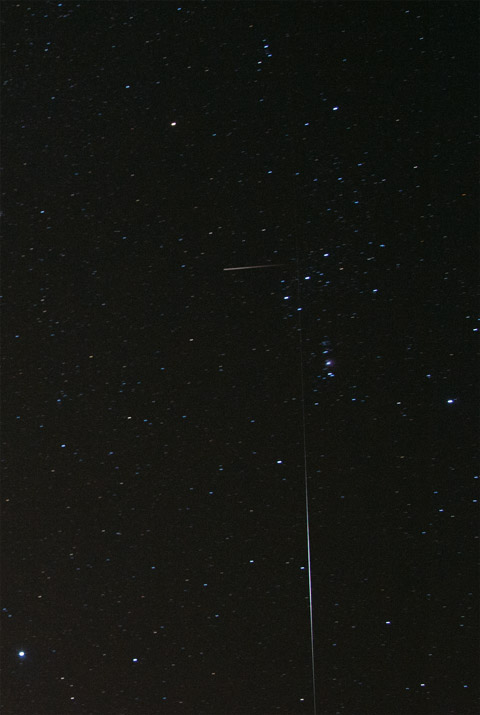When a comet moves through the inner solar system, heat from the sun produces large numbers of small rocky particles that spread out into a meteoroid stream stretching along the comet’s entire orbit. Each October as the Earth crosses the orbit of Comet Halley, many such meteoroids burn up as they enter the atmosphere, resulting in the Orionid meteor shower, so named because its meteors appear to radiate from the constellation Orion.
Just above the center of this image, a meteor is moving from right to left. Simultaneously, traveling from top to bottom is communications satellite Iridium 58, brightening as sunlight reflects from its left antenna causing a dramatic Iridium flare.

Orion, Orionid, Iridium
Taken October 22, 2012 at Colorado Springs, Colorado
Nikon D300s, 24mm, f/6.3, 30 s, ISO 1600
A single image captured the meteor, background stars, and the peak Iridium flare
Five images were composited to show the entire path of the satellite
Distance to the meteor is 80–120 km (50–70 miles)
Distance to the satellite at peak flare is 1234 km (767 miles)
Distance to Alnilam, the middle star in Orion’s belt, is about 1300 light years (1.2 × 1016 km, 7.6 × 1015 miles)
Predictions of Iridium flares can be found at Heavens-Above
This generation of Iridium satellites is being retired, and when the last one is gone, these flares will no longer be observed.
